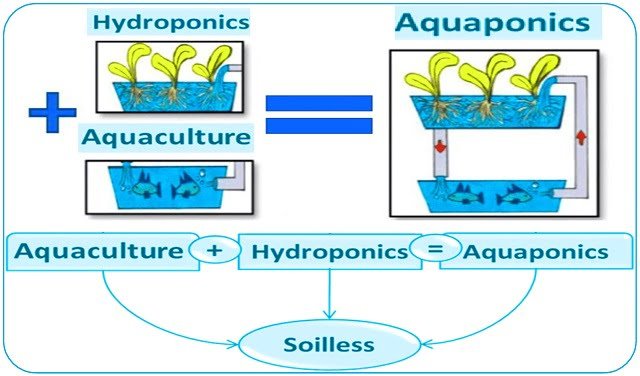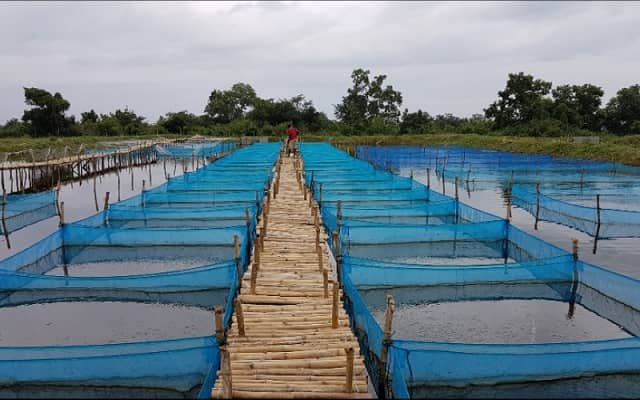The fisheries and aquaculture sector has one of the lowest carbon footprints among all food production systems, while supporting livelihoods of millions of people.
However, climate change has a profound impact on the wellbeing of aquatic ecosystems, with implications for food security and the livelihoods communities dependent on fishery and aquaculture.
To help countries integrate fisheries and aquaculture into adaptation planning, the Food and Agriculture Organization of the United Nations (FAO) have developed the Addressing Fisheries and Aquaculture in National Adaptation Plans – Supplement to the UNFCCC NAP Technical Guidelines (“NAP-Fish guidelines”). These new guidelines highlight the nexus between sustainable aquatic food production and climate adaptation.
The NAP-Fish guidelines are intended for national policymakers within ministries and institutions addressing the governance and management of the fisheries and aquaculture sector. They can provide support in linking these decision-makers’ work to climate change, enabling them to lead the recognition, promotion and inclusion of the sector in national adaptation planning. Other stakeholders can also make use of these guidelines and understand how to engage in and to initiate climate change adaptation at the subnational and local levels.
Marine and freshwater aquatic ecosystems play an increasingly important role in global food systems and socio-economic landscape. They are also recognised as essential pieces of nature-based solutions to global climate change because of their roles in carbon sequestration and in sustaining key ecosystem services. For example, they sustain both food and oxygen production, provide coastal protection, and offer nursery grounds for aquatic species.
In this context, Manuel Barange, Director of FAO’s Fisheries Division notes that “together, we can work to reduce vulnerabilities of those most dependent on fisheries and aquaculture in order to sustain their livelihoods, food and nutrition security, and overall wellbeing. Together, we can adapt to a changing climate whilst unlocking the Blue Growth potential of our aquatic systems.“
Eduardo Mansur, Director of FAO’s Office of Climate Change, Biodiversity and Environment, complements this sentiment, emphasizing the importance of human-centered mainstreaming of fisheries and aquaculture in adaptation planning:
Stay Always Informed
Join our communities to instantly receive the most important news, reports, and analysis from the aquaculture industry.
”The centrality of climate change adaptation to ensuring fisheries sustainability as well as a means to safeguard the most vulnerable communities without alternative livelihood resilience cannot be over-emphasised.”
This brand new publication accompanies the Addressing agriculture, forestry and fisheries in National Adaptation Plans – Supplementary guidelines, which was issued by FAO in 2017 as a response to a call by the Least Developed Group (LEG) of the United Nations Framework Convention on Climate Change (UNFCCC) inviting international actors to draft sectorial guidelines to complement the UNFCCC NAP Technical Guidelines.
FAO also launched the Addressing forestry and agroforestry in National Adaptation Plans – Supplementary guidelinesshortly before the NAP-Fish guidelines in 2020. All guidelines build upon the lessons learned in countries through the Integrating Agriculture in National Adaptation Plans (NAP-Ag) programme, co-led by FAO and the United Nations Development Programme (UNDP), funded by the German Ministry of the Environment, Nature Conservation and Nuclear Safety through IKI.
The project addresses climate change adaptation in agriculture within national planning and budgeting between 2015-2020 in 11 countries. They are all useful in providing a structured process for agriculture sectors to present their adaptation potential and to engage with other sectors to discuss synergies and trade-offs of actions affecting the interlinked socio-ecological systems.
Reference (open access):
Brugere, C. and De Young, C. 2020. Addressing fisheries and aquaculture in National Adaptation Plans. Supplement to the UNFCCC NAP Technical Guidelines. Rome, FAO. https://doi.org/10.4060/ca2215en
Source: United Nations Development Programme
Editor at the digital magazine AquaHoy. He holds a degree in Aquaculture Biology from the National University of Santa (UNS) and a Master’s degree in Science and Innovation Management from the Polytechnic University of Valencia, with postgraduate diplomas in Business Innovation and Innovation Management. He possesses extensive experience in the aquaculture and fisheries sector, having led the Fisheries Innovation Unit of the National Program for Innovation in Fisheries and Aquaculture (PNIPA). He has served as a senior consultant in technology watch, an innovation project formulator and advisor, and a lecturer at UNS. He is a member of the Peruvian College of Biologists and was recognized by the World Aquaculture Society (WAS) in 2016 for his contribution to aquaculture.




